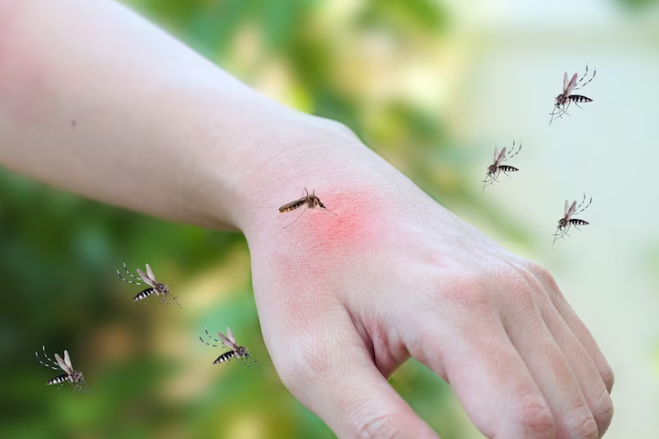Mosquitoes are more than just a nuisance—they can be a serious health risk. For homeowners looking to reclaim their outdoor spaces, understanding mosquito removal services is crucial. This guide delves into common methods used by professionals, how often services should be scheduled, the safety precautions involved, and the impact of weather conditions on treatment effectiveness.
What Are The Common Methods Used By Professionals For Mosquito Removal?
Professional mosquito removal services utilize a variety of methods to tackle these pests effectively. One of the most common approaches is the application of insecticides. These can be applied through misting systems or fogging, targeting adult mosquitoes. The chemicals used are designed to kill mosquitoes on contact and repel them for a period afterward.
Another method is the use of larvicides, which target mosquito larvae in standing water. This approach prevents mosquitoes from reaching adulthood and breeding in your yard. Larvicides can be applied to water sources such as ponds, bird baths, or rain barrels.
In addition to chemical treatments, some services use biological control methods. This involves introducing natural predators like certain types of fish or bacteria that feed on mosquito larvae. These solutions are often environmentally friendly and help maintain the ecological balance of your outdoor spaces.
For a more integrated approach, some professionals offer mosquito management plans that combine several of these methods. This strategy not only addresses the current mosquito population but also works to prevent future infestations by managing potential breeding sites and reducing mosquito habitats.
How Often Should Homeowners Schedule Mosquito Removal Services?
The frequency of mosquito removal services can depend on several factors, including the local mosquito population, the time of year, and the specific treatment methods used. Generally, it is advisable to schedule mosquito treatments on a regular basis, especially during the warmer months when mosquitoes are most active.
For many homeowners, a monthly treatment plan is effective in keeping mosquito populations under control. This schedule ensures that both adult mosquitoes and larvae are consistently targeted, reducing the likelihood of a resurgence. During peak mosquito seasons, which typically include late spring through early fall, more frequent treatments might be necessary.
Some homeowners may opt for a more intensive schedule based on their property’s specific needs. For example, if you have a large yard or a water feature that attracts mosquitoes, you might benefit from more frequent treatments. Consulting with a mosquito control professional can help determine the best plan tailored to your home and its unique mosquito challenges.
What Safety Precautions Do Mosquito Removal Services Take During Treatment?
When it comes to mosquito removal, safety is a top priority for professional services. Here’s how they ensure a safe and effective treatment process:
- Initial Property Assessment: Before starting any mosquito removal treatment, professionals conduct a thorough evaluation of your property. This assessment helps identify potential hazards and allows them to plan a treatment strategy that minimizes risks to people, pets, and the environment.
- Controlled Chemical Application: During the application of insecticides or larvicides, service providers adhere to strict safety guidelines. They apply chemicals in a controlled manner to ensure precise coverage and minimize unintended exposure. The goal is to target mosquito populations effectively while reducing the impact on other areas of your yard.
- Post-Treatment Precautions: To maximize safety, homeowners and their pets are usually advised to avoid treated areas for a specific period—often a few hours or until the chemicals have fully dried. This precaution helps prevent direct contact with the chemicals and ensures their effectiveness.
- Eco-Friendly Options: For those concerned about environmental impact, many mosquito removal services offer eco-friendly alternatives. These might include natural insecticides or biological control methods, which are designed to be less harmful to the environment. Service providers will explain the safety measures associated with these options and address any concerns you might have about their use.
By following these safety protocols, mosquito removal services aim to provide effective solutions while protecting your family, pets, and the environment.
How Do Weather Conditions Affect The Effectiveness Of Mosquito Removal Services?
Weather conditions can play a significant role in theeffectiveness of mosquito removal services. Rain, wind, and temperature fluctuations can all impact how well treatments work. For instance, heavy rain can wash away insecticides applied to outdoor surfaces, reducing their effectiveness. It can also lead to the accumulation of standing water, which creates new breeding grounds for mosquitoes.
Wind can also affect the application of treatments, as it may cause the chemicals to disperse unevenly or blow away from the target areas. Therefore, professional services often choose optimal weather conditions for treatment to ensure maximum effectiveness. They might delay treatments if rain or strong winds are forecasted to avoid wasting resources and to achieve better results.
Temperature is another factor that influences mosquito activity and treatment success. Mosquitoes are more active in warmer temperatures, making it an ideal time for treatments. However, extremely high or low temperatures can impact the performance of some treatments. Professionals typically account for these variables and adjust their methods accordingly to maintain effective mosquito control.
By understanding these aspects of mosquito removal services, homeowners can make informed decisions and work effectively with professionals to keep their outdoor spaces mosquito-free. Whether it’s selecting the right treatment method or scheduling services at the optimal time, staying informed helps ensure a comfortable and safe environment for you and your family.
Frequently Asked Questions About Mosquito Removal Services
How Much Does Mosquito Removal Service Typically Cost?
The cost of mosquito removal services can vary based on the size of your property, the severity of the infestation, and the type of treatments used. On average, homeowners can expect to pay between $75 and $150 per treatment. If you opt for a monthly service plan, prices generally range from $250 to $500 per season. It’s a good idea to get a detailed quote from a provider to understand the full scope of the services included and any potential additional costs.
Are Mosquito Removal Treatments Safe for Pets and Children?
Most mosquito removal treatments are designed to be safe for pets and children once they have dried. At Pete’s Pest Patrol, we use eco-friendly products that minimize risks to your family and pets. We recommend keeping pets and children away from treated areas until the product has fully dried, which usually takes a few hours. Our team will provide specific instructions on how to ensure everyone’s safety.
How Quickly Will I See Results After a Mosquito Treatment?
You should start noticing a reduction in mosquito activity within 24 to 48 hours after treatment. However, achieving optimal results may take a few days, especially if you’re dealing with a significant infestation. Regular treatments help maintain effectiveness and ensure long-term relief from these pesky insects.
Ready to Enjoy Your Outdoor Space Again?
At Pete’s Pest Patrol, we’re passionate about helping you reclaim your yard from mosquitoes. Our expert team is ready to deliver effective, safe, and customized mosquito removal solutions. Don’t let mosquitoes keep you indoors—contact us today to schedule your first treatment and enjoy a bite-free summer.
Get in touch with Pete’s Pest Patrol now and let’s make your outdoor space mosquito-free!

